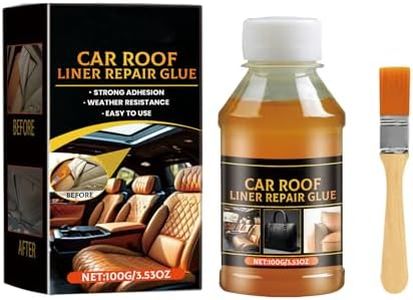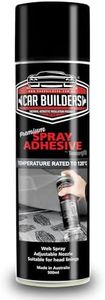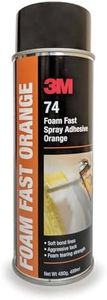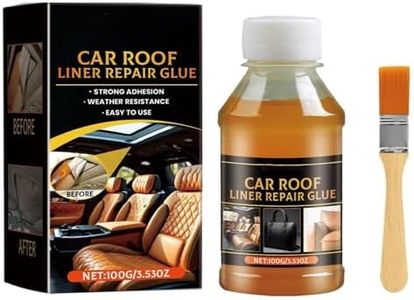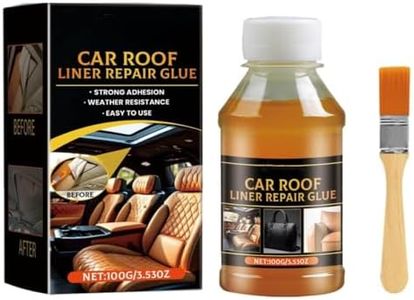We Use CookiesWe use cookies to enhance the security, performance,
functionality and for analytical and promotional activities. By continuing to browse this site you
are agreeing to our privacy policy
10 Best Headliner Adhesive Spray
From leading brands and best sellers available on the web.Buying Guide for the Best Headliner Adhesive Spray
Headliner adhesive spray is used to attach the fabric or foam of your car's headliner to the roof, ensuring it stays fixed and looks neat. Choosing the right adhesive spray is important for a lasting repair or upgrade. The type of adhesive you use can affect how well the headliner holds up to heat, humidity, and daily wear. When comparing products, focus on their bonding strength, heat resistance, drying time, and ease of use. Picking the right one will depend on the environment your car is exposed to and your experience with similar repairs.Bonding StrengthBonding strength describes how well the adhesive can hold materials together. A higher bonding strength means the headliner will stay attached under stress or weight, preventing sagging or peeling over time. Adhesives are typically rated for light, medium, or heavy-duty use. For light repairs or small vehicles, a medium strength might be enough, but for full headliner replacements or larger surfaces, opt for a heavy-duty adhesive to ensure maximum hold.
Heat ResistanceHeat resistance indicates how well the adhesive can handle high temperatures without losing its sticking power. This is crucial for cars, as interiors can get extremely hot, especially in warm climates. Some adhesives are designed for temperatures up to 120°F (about 50°C), while others can withstand 200°F (about 93°C) or more. If your vehicle is often parked in the sun or you live in a hot area, prioritize a spray with a high heat resistance to prevent the headliner from falling.
Drying TimeDrying time refers to how quickly the adhesive sets after application. Quick-drying adhesives are convenient for small repairs or when you want a fast turnaround, but they may be less forgiving if you need to adjust the material. Slower-drying options give you more time to position the fabric but require patience. Choose a drying time that matches your experience and confidence: quick-dry for simple fixes or more control for complex projects.
Spray Pattern and CoverageThe spray pattern affects how evenly the adhesive is applied. A wide, even spray ensures consistent coverage, reducing the risk of lumps or weak spots. Some sprays are more focused, which is better for targeted repairs but takes longer to cover large areas. For full headliner jobs, look for a product with a broad, controlled spray for consistent application; for small patches, a precise spray might be more manageable.
Compatibility with MaterialsNot all adhesives work with every type of fabric, foam, or plastic. Compatibility means the spray will bond well with both the headliner material and the car’s ceiling without causing discoloration or damage. Always check that the adhesive supports the specific type of fabric or foam you have. If unsure, test a small area or check manufacturer guidelines to ensure a secure fit and prevent damage.
Odor and ToxicityAdhesive sprays often have strong chemical smells and may contain substances that shouldn't be inhaled. Some products are low-odor or low in volatile organic compounds (VOCs), making them safer, especially if you'll be working in a closed area. If you’re sensitive to smells or working in a poorly ventilated space, opt for an adhesive labeled as low-odor or non-toxic to improve comfort and safety.

